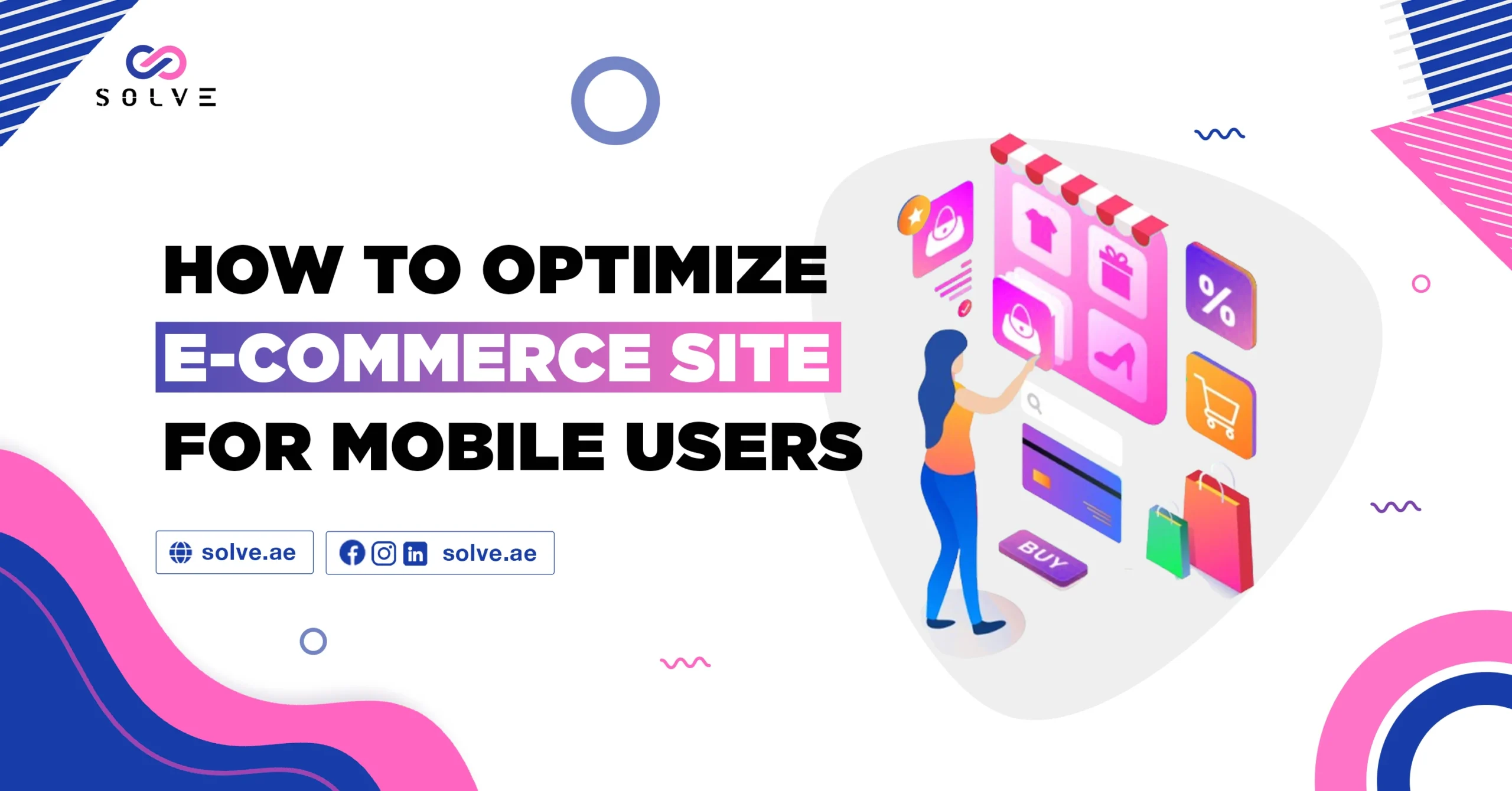- By Vanshika Choudhary
- April 8, 2025
In our current environment where digitalization reigns above all, the most plausible means indeed happen to be mobile devices to access the World Wide Web, with a good percentage of e-commerce transactions streamed through smartphones and tablets. Therefore, a mobile-friendly e-commerce site is no longer an option; it has now become a necessity for any business wishing to prosper in the competitive digital market. The guide will discuss the significance of mobile optimization, ways to improve the mobile shopping experience, and best practices to ensure that the e-commerce website in question is 100 percent mobile-friendly.
Importance of Mobile Optimization
Mobile optimization is important because
Mobile optimization directly impacts user experience and conversions. Given that an increasing number of users navigate to sites via mobile devices, neglecting mobile optimization will lead to missing out on sales.
Google rewards mobile-friendly sites in ranking search results, rendering more visibility to your site and driving organic traffic. Not to mention, the mobile-optimized site is designed for seamless and easy shopping processes to enhance user satisfaction and loyalty.
The reverse applies: having a mobile-optimized site can serve as one of the differentiating factors in a highly competitive market that competitors may not have adopted. Mobile optimization also guarantees that the site is leveraging accessibility features available for desktop and therefore engaging the user as a whole.
Strategies for Mobile Optimization
-
Responsive Design
A responsive design ensures that your website adapts seamlessly to different screen sizes and resolutions, making it accessible and user-friendly across various devices, including smartphones, tablets, and desktops. Responsive design automatically adjusts the layout based on screen size, ensuring easy navigation and readability. It indirectly helps to rank higher in Google search results since Google favors mobile-friendly websites. Implementing a responsive design is fairly easy, as platforms such as WordPress provide many responsive themes and templates. As a result, businesses guarantee a consistent user experience across devices, thus maintaining brand consistency and enhancing user engagement.
-
Content Optimization
Mobile users have a short attention span and like brief information. Eventually, content optimization is shortened images, fewer videos, and clear and brief description texts. Nice, quality images that load quickly enhance the attractiveness of products and keep the user well-informed to make a purchase decision. Highlighting product features and benefits in product descriptions can be very critical; that way, mobile users can quickly understand and evaluate without being overwhelmed by too much unnecessary information. Hence, mobile content optimization regulates the loading speed of the content, thus saving time and reducing the bounce rate and providing a generally good experience.
-
Streamlining the Sales Funnel
In simplifying buyer checkout, a good reduction of friction happens to further increase conversions. This should feature cutting down the essential fields, one-page checkout options, various payment methods, and fewer checkout steps. Such measures on how much checkout has to do increase the cart abandonment rate. More important is that visitors may shop without accounts or without opening an account by opting for a guest checkout feature. Furthermore, mobile payments through Apple Pay and PayPal promise more in terms of streamlining, safety, and convenience in shopping. Simplified sales funnels enrich the entire shopping experience at higher conversion rates with higher customer satisfaction.
-
Reshape Mobile Features to Specific Needs
Mobile devices are equipped with certain features that, if applied, could upscale the shopping experience:
Push Notifications: Send customized alerts for users about special offers, product renewals, and order notifications to push them to come back again. Push notifications will convert much more into sales and enhance customer interaction.
Geolocation: Apart from other location-centric features, promotions can get that additional relevant offers and recommendations to increase tailored marketing efforts toward particular locations.
Touch Gestures: Shift between product photos using swipes and pinches to create an even more attractive shopping experience.
-
Improvement in Navigation and UX
Make your mobile site intuitive for easy navigation:
Top Navigation Menu: Simple and accessible menus should allow users to locate products quickly. Such could comprise a hamburger menu or a collapsible navigation drawer to save space and give a clean interface. CHeck out our latest blog post on How to Choose the Best Cloud Software for Your Business Needs
Search Functionality: It should incorporate a Quick Search bar with auto-completion for product searches or discovery. Frustration-free use helps find specific products easily in the overall shopping experience.
CTA Buttons: Call-to-action buttons should be more prominently positioned and touch-screen friendly to entice users to take action-whether making a purchase or signing up for a newsletter.
Best Practices for Mobile Optimization
- Mobile-First Orientation
Start by constructing your site around mobile users first, then bigger screens. Doing such would ensure that the little devices are well looked after, providing a beautiful, solid base for a great user experience. With this focus on the mobile-first approach, your website will be more relevant to most people who will access it via mobile devices.
- Effective Visuals
These images should be clear, high-quality images that load rapidly on mobile pages. This improves visual appeal and helps users make better purchasing decisions. High-quality visuals create a more professional and engaging user interface, which can prove important in trust building and purchase facilitation.
- Streamlining the Sales Funnel
In simplifying buyer checkout, a good reduction of friction happens to further increase conversions. This should feature cutting down the essential fields, one-page checkout options, various payment methods, and fewer checkout steps. Such measures on how much checkout has to do increase the cart abandonment rate. More important is that visitors may shop without accounts or without opening an account by opting for a guest checkout feature.
- Reshape Mobile Features to Specific Needs
Mobile devices are equipped with certain features that, if applied, could upscale the shopping experience:
Push Notifications: Send customized alerts for users about special offers, product renewals, and order notifications to push them to come back again. Push notifications will convert much more into sales and enhance customer interaction.
Geolocation: Apart from other location-centric features, promotions can get that additional relevant offers and recommendations to increase tailored marketing efforts toward particular locations.
Touch Gestures: Shift between product photos using swipes and pinches to create an even more attractive shopping experience.
Making Sure Mobile Optimization Takes Place
Mobile optimization takes place via these steps:
Site Assessment: One must assess mobile performance using tools like Google PageSpeed Insights.
Theme Voting: Cast a vote for a mobile-responsive theme that fits into your e-commerce specification.
Content Optimization: Make the contents of your site brief and easy on the eyes for mobile users.
Checkout: Implement a good mobile payment process for one-off purchases.
Testing and After: Test the site on various models of mobile devices and keep improving it based on user feedback.
Mobile SEO Techniques
- Boost Mobile SEO
Mobile consumers directly search for specific products. Ensure that your search bar is visible and consider adding autocomplete features for an improved experience. Content should be written to be scannable, short, and digestible for small screens and should contain the most relevant keywords and phrases related to the intent of people who search with mobile devices.
- Local SEO
Include local SEO in your online store if you have a real shop to help your store’s listings for local searches. This manifests using locally targeted keywords in advance for creating Google My Business profiles. Markup with structured data to give search engines more context about your products to enhance the possibility of appearing in mobile SERP features and rich snippets.
Conclusion
Optimizing your e-commerce site for the mobile user becomes crucial to stay competitive in the digital market today. By responsive designing that optimizes site content, utilizes suitable mobile features, and enhances navigation and other UX aspects, in return will help offer great mobile experiences for shopping leading to conversions and eventual sales. Contact us Since mobile commerce will continue to grow, placing emphasis on mobile optimization will not just be a strategy for the future success of e-Commerce but a necessity.




